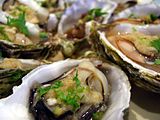Travel Information
GuangZhou
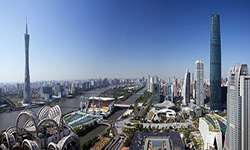
Guangzhou is located in southern China in the middle of Guangdong Province, north of the Pearl River Delta. The city also lies close to the South China Sea, Hong Kong, and Macau. Because of its convenient geographical position, Guangzhou has been called "China's Southern Gateway". As the capital of Guangdong Province, Guangzhou is the center of its politics, economy, science, education. It is also southern China's key transportation hub and trading port.
Covering an area of 7,434.4 square kilometers, Guangzhou is home to more than 12 million people. It has direct jurisdiction over ten districts and two county-level cities. The ten districts include Yuexiu, Liwan, Haizhu, Tianhe, Baiyun, Huangpu, Huadu, Panyu, Nansha, Luogang, while the two county-level cities are Zengcheng and Conghua.
The annual average temperature in Guangzhou is 22.8 degrees centigrade, and average relative humidity is about 68%, while annual rainfall across the city's urban area is over 1,600 mm. Guangzhou lies right next to the Baiyun Mountain, which is called the "lung of the city". The Pearl River, China's third largest waterway, also runs through Guangzhou. The city's humid subtropical climate is greatly influenced by Asian monsoons. With year-round flowers and evergreen plants, Guangzhou has been affectionately called the "Flower City" since ancient times.
Lifeful Guangzhou is one of the first group of 24 historical cities announced by the State Council and China Top Tourist Cities. With over a 2,200-year history, Guangzhou is rich in antiquity, unique customs and deep cultural deposits.
Guangzhou is historically both the start of the Maritime Silk Road and the center of Lingnan Culture. It is also the cradle of Chinese modern revolution, and the foreland of China's reform and opening to the outside world. Guangzhou has been a renowned commercial center since ancient times and is now the economic hub of southern China. Chinese Import and Export Commodities Fair is widely regarded as being "The No.1 Exhibition in China" and remains a magnet for foreign investors.
An ancient but dynamic city, Guangzhou impresses visitors with both its vivid modern ambience and unique traditional Lingnan indigenous culture. Reflecting the unique charm of a multi-cultural metropolis, the city's cultural influences can be seen in all aspects of its social life. Specific examples include diet, lifestyle, architecture, commerce, language, music, art, customs and entertainment.
Guangzhou Tower
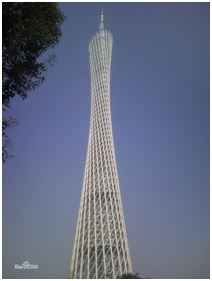
Canton Tower (Canton Tower), built in Guangzhou City , Jiangxi Road, Haizhu District, read from the Pearl River south bank of 125 m, with sea, sand island and the Pearl River New City across the river. Is one with sightseeing tourism based, with culture and entertainment, and the city features large windows urban infrastructure for 2010 held in Guangzhou 16th Asian Games to provide broadcast services. Guangzhou Tata main body 450 m (top sightseeing platform highest point 454 meters), the antenna mast 150 meters, with a total height of 600 meters, replacing Canada 's CN Tower became the world's third tallest TV tower , behind the United States North Dakota State KVLY TV tower (height of 628.8 meters, July 14, 1963 to commence August 13, 1963 completion), is now second only to the world's tallest self-standing tower - Japan Tokyo Sky Tree tower self-standing tower ( height of 634 meters, July 14, 2008 to commence February 29, 2012 completion), the world's second highest -standing tower , Guangzhou has become a new landmark . Guangzhou Tower was September 30, 2010 the official opening, on October 1 officially open ticket reception tourists.
Baiyun mountain

Located in northeast of downtown Guangzhou, the Baiyun Mountain covers a total area of 20.98 square kilometers and is a national grade-AAAAA scenic area and the only national scenic area in Guangzhou. As a well-known mountain in south Guangdong province, the mountain has been given a title of “most beautiful mountain in Guangzhou??since ancient times. Its highest peak, Moxing Ridge, stands 382m above sea level.
Since the reform and opening up policy was carried out, some new fascinating scenic spots, e.g. Mingchun Valley, Guangzhou Forest of Steles, Nengren Temple, Yuntai Garden, Sculpture Park, and Peach Blossom Ravine, etc., have been put up. They shape up a colorful gallery of landscapes along with previous Moxing Ridge, Cloud of Dust, and No. 1 Peak in Guangzhou, etc. All of them are optimal destinations of tourists who go to Guangzhou.
YueXiu Prak
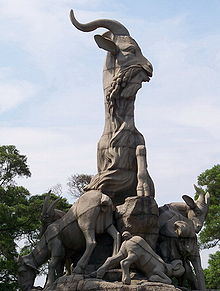
Yuexiu Park is the largest comprehensive park in Guangzhou. covering an area of 860,000 square meters. Dating back to Qin Dynasty, it was a main attraction for the local people. The building of Yuexiu Park was originally proposed by Sun Yat-sen in modern times. After the liberation of Guangzhou, the people's government turns it into a huge and modern park that is listed as the Eight Scenic Spot of Guangzhou.
Yuexiu Park is a park of mountains. The park consists of g 7 hills of Yuexiu Mountain, Muke Hill, Changyao Hill, Liyutou Hill and Sweet Osmanthus Hill and Beixiu, Nanxiu and Dongxiu 3 artificial lakes. Visitors can see all kinds of Chinese agricultures such as pavilions, towers, lofts and water pavilions and five floor buildings and Zhenhai Tower and Five Goat Stone Statue.
Zhenhai Tower is considered as the landmark of Guangzhou. The tower is five stories in height hence the name of Five-Story Tower called by the locals. The tower was built 1380, which is the best preserved ancient agriculture in Guangzhou. It is an amazing thing for visitors to reach the top of the tower so that enjoy the great view of the Pearl River and White Cloud Mountain.

Five Rams Stone Sculpture stands at Muke hillock of the park, which was built in 1959 and considered as the symbol of Guangzhou and Guangzhou has a name of Goat City.
There is a Legend of Five Rams Stone Sculpture that long time ago there were five celestial beings, who wore robes of five colors. One day they rode rams through the air to Guangzhou, each carrying a stem of rice. They presented the people with the rice stems as a sign from heaven that the area would be free from famine forever.
Chen Clan Ancestral Hall

Chen Clan Ancestral Hall, located at Zhongshan 7 road Guangzhou City, was built during the 14th to 19th year of Guangxu Reign of the Qing dynasty (1888-1893). Contributed by the Chen Clan in Guangdong Province, the building served as a temporary residence for the Chen’s descendents when they came to the provincial capital for official discussion, imperial examination or litigation. As a return, the memorial tablets of the ancestors of Chen Clan could also be put in the building for worship.
Covering a total area of 15,000 square meters and a floor space of 6,400 square meters, comprising nineteen single buildings interspaced by courtyards and connected with verandas, Chen Clan Ancestral Hall is the largest, best preserved and most gorgeously decorated ancestral building in South China.
Acclaimed as a bright pearl among the artistic buildings in Lingnan area, all the architectural decorations in the building are of varied subjects and superb workmanship, including wood carving, brick carving, stone carving, pottery sculpture, lime sculpture, iron casting and painting, which make a comprehensive expression of the exquisite folk arts and handicrafts of the local province. In 1959, based on Chen Clan Ancestral Hall, Guangdong Folk Arts Museum was established by the government for collection, study and display of folk arts throughout the country, especially those from the local province. Chen Clan Ancestral Hall was listed as an important national cultural relic under state protection by the state council in 1988. In 2002 and 2011 it was listed as one of The Top Eight Sights of Guangzhou. In 2006 it was named as The Cultural Card of Guangzhou City. Nowadays it is the most culturally and artistically featured museum as well as a famous tourist attraction in South China.
XiGuan
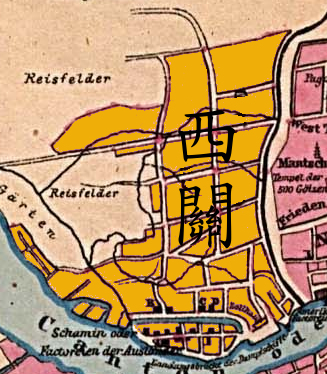
Xiguan is a traditional geographical division of Guangzhou, China. It is located in the Liwan district with the North River to the west, Renmin Road to the east, Pearl River to the South and Nishimura to the north. This district had once been located outside the western gates of Guangzhou in the ancient years. It is worth mentioning that the name is still in use nowadays.
Today it is a historic and a very important location memorizing and highlighting the important history of the country. It is known mainly for the well preserved traditional architecture and ancient styles of houses. The traditional and houses are called Xiguan Big Mansion. The houses were once occupied by the powerful and wealthy families of the city.Xiguan are conventional residential houses that had been built in the Xiguan Corner by the wealthy businessmen during the Qing Dynasty. The houses all have the traditional Lingnan characteristics. The mansions are all well decorated, bright and light. On either side of the houses is Qingyun Lane. The lanes are secluded and fire proof. They are also very practical since the serve the functions of planting trees and flowers, transportation, air curing, day lighting, drainage, fire prevention and ventilation.
Lingnan Impression Park
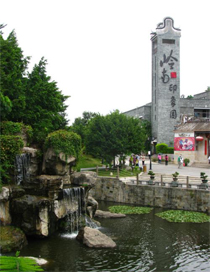
Lingnan Impression Park is located in Guangzhou University City (Xiaoguwei Island) south of the original training streams within the region, with a total area of 300 acres, is a set of tourism, leisure, entertainment, dining, shopping, accommodation, experience local customs and Lingnan Lingnan folk cultural tourist attractions. Lingnan Lingnan Impression Park is a typical traditional building community. Houses built by the water, or the narrow gate high house, or pan ear wall. The long Albatron Lane, quaint trip cage door, fine Manchu windows, meandering creeks, ponds clear, always exudes splendor and charm.
Lingnan Impression Park in distinctive streets, temples, houses and shops, full of traditional Lingnan culture. Scenic highlights native Lingnan culture and rural landscape, restoration Lingnan folk scenes of life and prosperity to the Lingnan architectural integrity, deep folk culture, folk customs idyllic village has become a modern understanding of Lingnan ancient culture of the window.
Sun Yat-sen Memorial Hall

Sun Yat-sen Memorial Hall, one of the most characteristic landmark buildings of Guangzhou, is a commemorative architecture built in memory of the great revolutionary forerunner, Sun Yat-sen. It’s also an important national cultural relic protection unit. Sun Yat-sen Memorial Hall is actually a grand and palatial octagonal building with magnificent appearance and rich national characteristics. The architect utilized the structure principle of architectural mechanics skillfully and adopted the composite structure of steel frame and reinforced concrete. Thus, there is no pillar in the architectural span with the span of 71 meters, making the hall looking more spacious and magnificent.
Sun Yat-sen Memorial Hall together with the yard covers the land area of 62,000 square meters. The main building of the memorial hall is a palatial assembly hall which covers a building area of 3,700 square meters and has the height of 49 meters. With color painting patterns, yellow bricks and sapphire blue glazed tiles, the assembly hall looks resplendent and magnificent in a solemn atmosphere. In front of the hall, there is a bronze stature of Sun Yat-sen.
Sun Yat-sen Memorial Hall can accommodate about 5,000 persons, which is also an important venue where large-scale gatherings, various activities in memory of Sun Yat-sen and theatrical performances of Guangzhou are held. Since it was open to the public, Sun Yat-sen Memorial Hall has attracted an increasing number of tourists and won great reputation.
The Original Site Of Whampoa Military Academy
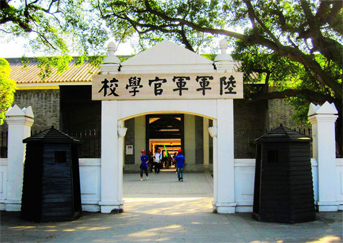
The Original Site Of Whampoa Military Academy located in Changzhou Island, Huangpu District, China. During the period of the first collaboration between Kuomintang and the Communist Party of China,Sun Yat-sen founded Huangpu Military Academy on Changzhou Island in hopes of cultivating revolutionary military officers and saving China that was in peril of subjugation.With joint efforts of the two parties, the academy grew rapidly into a comprehensive one with the complete system, strict organization and large scale. It recruited cadets for seven times from 1924 to 1930.About 33,000 military officers graduated from here. They won their reputation in the general public by making significant contributions to suppression of Guangzhou trade association's riot, Guangzhou unification and battles in Northern Expedition as a new revolutionary force, backing up the Guangdong rebolutionary government strongly.
ShaMian
Shamian (also romanised as Shameen or Shamin, both from its Cantonese pronunciation) is a sandbank island in the Liwan District of Guangzhou, Guangdong province, China. The island's name literally means "sandy surface" in Chinese.
The territory was divided into two concessions given to France and the United Kingdom by the Qing government in the 19th century. The island is a gazetted historical area that serves as a tranquil reminder of the colonial European period, with quiet pedestrian avenues flanked by trees and lined by historical buildings in various states of upkeep. The island is the location of several hotels, a youth hostel, restaurants and tourist shops selling curios and souvenirs.
Sacred Heart Cathedral
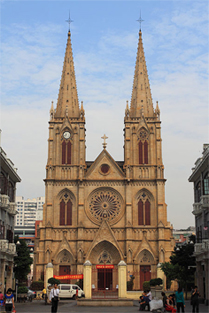
The Sacred Heart Cathedral, properly the Cathedral of the Sacred Heart of Jesus and also known as the Stone House by locals, is a Gothic Revival Roman Catholic cathedral in Guangzhou, China. It is the seat of the Archbishop of Guangzhou. The cathedral is located at 56 Yide Road, on the north bank of the Pearl River at the heart of the old town. It is one of the few churches in the world to be entirely built of granite, including all the walls, pillars, and towers (the other three are Notre Dame de Paris, Westminster Abbey and Cologne Cathedral).
The site of the cathedral was originally the residence of the Viceroy of Guangdong and Guangxi Provinces in the Qing dynasty. During the Second Opium War, the residence was completely destroyed and Viceroy Ye Mingchen was captured by the British. Based on the terms of an imperial edict issued by the Daoguang Emperor in February 1846 which promised compensation for churches destroyed and properties taken from the mission, the Société des Missions Etrangères de Paris obtained the site by signing an agreement with the Qing government on January 25, 1861. In his decree of approval, the Xianfeng Emperor wrote "from now on, war should be stopped and peace be sincerely kept forever".
With financial support from Napoleon III and donations from French Catholics, bishop Philippe François Zéphirin Guillemin, M.E.P. 明稽章), the first vicar apostolic of Guangdong, was in charge of the construction project. A French architect from Nancy, Léon Vautrin, was asked to design the cathedral, in collaboration with Charles Hyacinthe Humbert, also from Nancy, and Antoine Hermitte from Paris who together served as executive architects. Bishop Guillemin himself did not witness the completion of the cathedral, as he died at the age of 72 in Paris in 1886, two years before the cathedral was finished. The construction was then supervised by his successor, bishop Augustin Chausse, M.E.P. (邵斯).
Chimelong Safari Park

Chimelong Safari Park is part of the Chimelong Tourist Resort. Located in Guangzhou’s Panyu, it is China’s first and Guangzhou’s only “AAAAA” grade scenic area.
The largest park spans more than 2000 acres of land that includes a large section of unspoilt subtropical rainforest in Southeast China is currently the largest eco-zoo in China.
The park features a huge collection of roaming wildlife which can be observed in the comfort of self-driven vehicles. It is an integrated park for conservation, research, education as well as tourism encompassing both flora and fauna. Lauded as China’s world-class safari park, it boasts the world’s largest collection of wildlife in the world’s largest safari theme park.
Cantonese Cuisine
Cantonese cuisine , also known as Yue cuisine or Guangdong cuisine, refers to the cuisine of China's Guangdong Province, particularly the provincial capital, Guangzhou (Canton). It is one of the Eight Culinary Traditions of Chinese cuisine. Guangzhou delicacies are the main representatives of Yue Cai (Cantonese Cuisine), which includes Guangzhou dishes, Chaozhou dishes and Dongjiang dishes and enjoys great popularity all over the country. Guangzhou cuisine uses a wide range of ingredients from the sky, the earth, and the water. They also use seasonings sparingly. Compared with other Chinese cuisines, Guangzhou dishes use few thick spicy dressings in order to keep from masking the original taste of the food."Eating in Guangzhou" has become a popular saying both at home and abroad.
Yum cha is a term in Cantonese which literally means "drink tea".It is an integral part of the culinary culture of Guangdong Province, Hong Kong and Macau. In any city with a sizeable population of Cantonese people, to yum cha is a tradition on weekend mornings, and whole families gather to chat and eat dim sum and drink Chinese tea.With a history of about 150 years, morning tea — from the early streetside tea stalls to today's tea shops and fancy restaurants — has come to promise more than just tea. It's an occasion for family and friends to gather, chat, relax and enjoy Cantonese dim sum.Morning tea time can last to noon, or even 2 p.m. The elderly tend to go out for morning tea at 6 or 7 a.m. every day, while the young often go on weekends after a full night's sleep.


